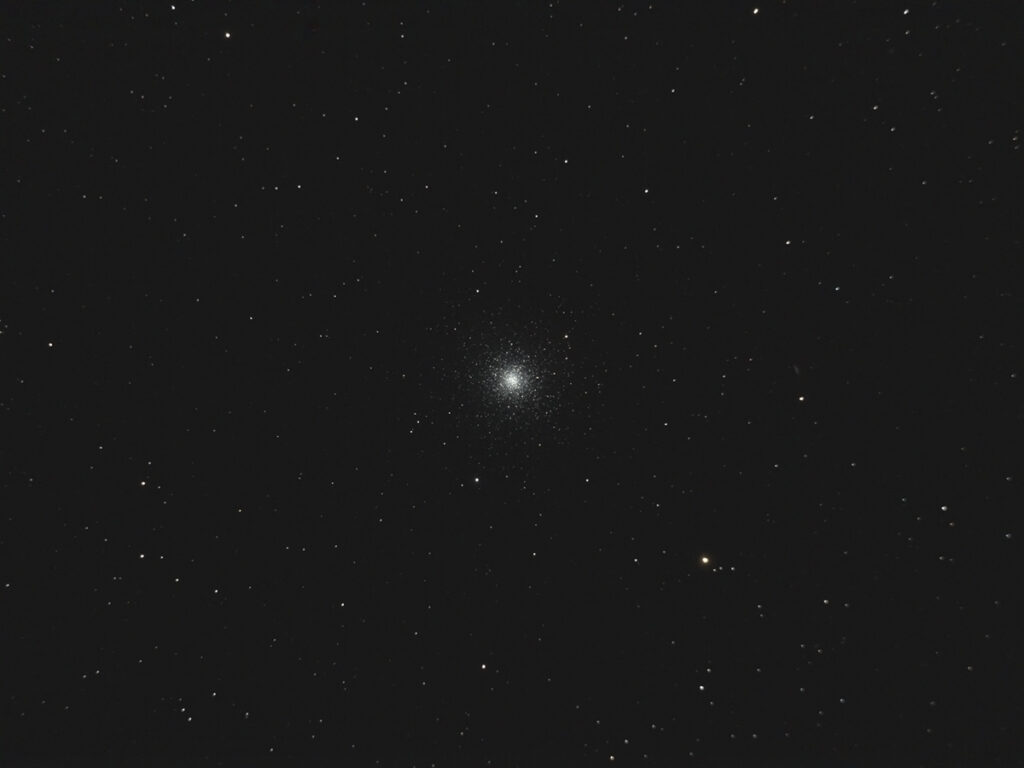
Telescope: Meade SN10 at f/4, Orion Atlas EQ-G
Camera: Full Spectrum Modified Nikon D810
Filter: GSO IR Blocking Filter
Guide scope: Williams Optics 50mm, ASI290MM mini, PHD
Exposure: 28x20sec, ISO 200, saved as RAW
Darks: None (dithered every 4 images)
Flats: 32×1/50sec, tee shirt flats taken at dusk
Average Light Pollution: Red zone, fair transparency
Lensed Sky Quality Meter: 18.5 mag/arc-sec^2
Stacking: Mean with a 1-sigma clip.
White Balance: Nebulosity Automatic
Software: Backyard Nikon, Nebulosity, Deep Sky Stacker, Photoshop
M3 is a beautiful example of a globular cluster in a relatively lonely stretch of sky. The cluster is a member of the galactic halo and spends much of its time orbiting well outside the plane of the galaxy. It is presently 33,000 light years away from us, 40,000 light years from the galactic core, and 33,000 light years ‘above’ the galactic plane. Home to about 500,000 stars, M3 is relatively young as globular clusters go with an estimated age of 8 billion years.
M3 currently rises in the northeast during the early evening.
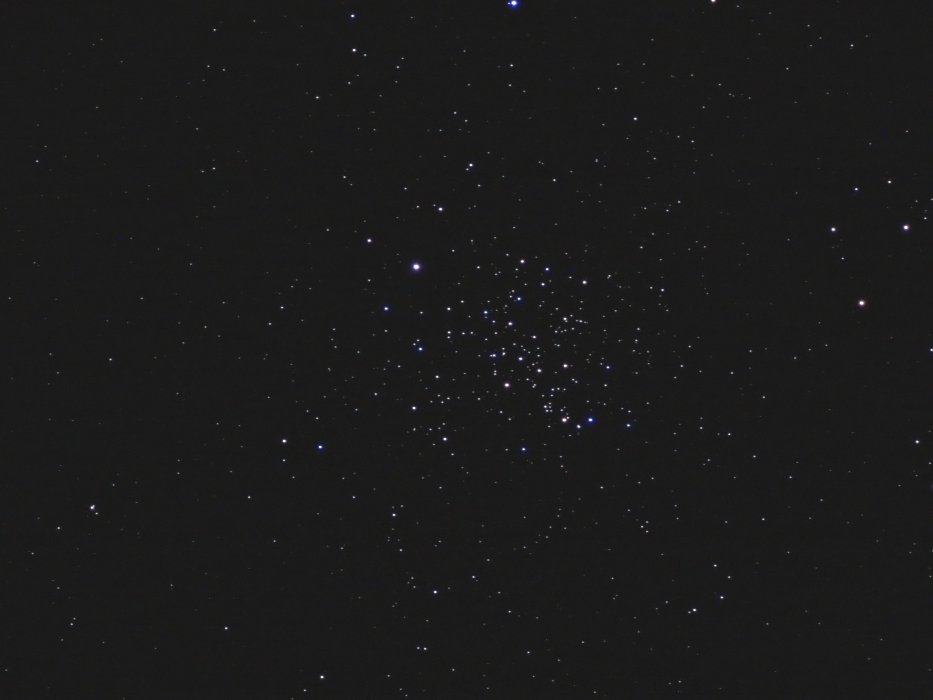
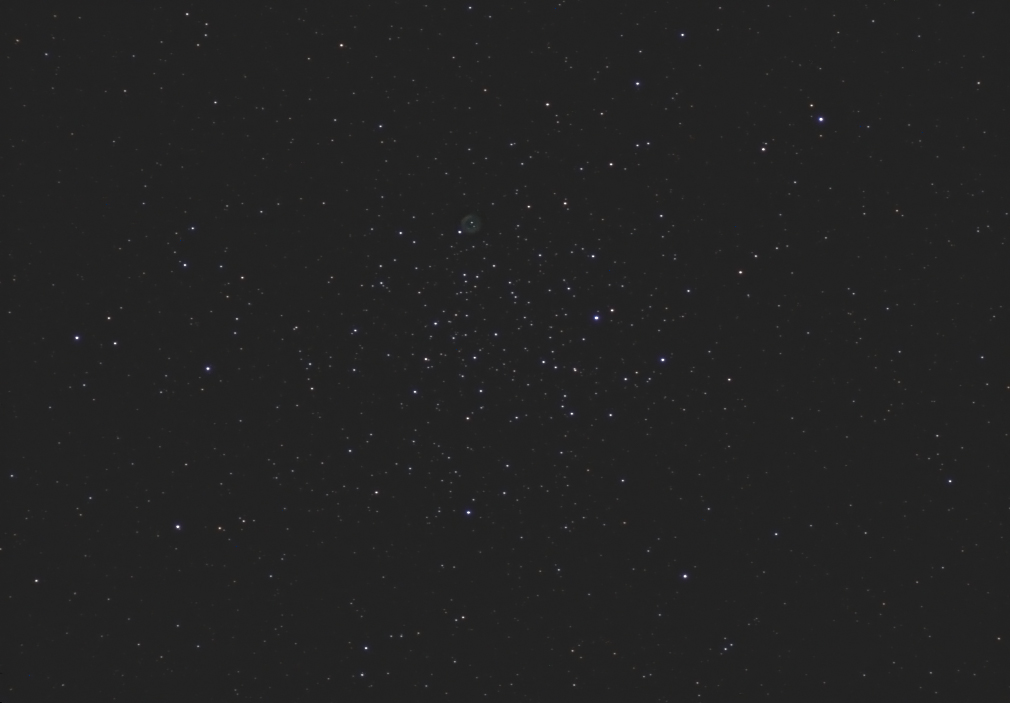
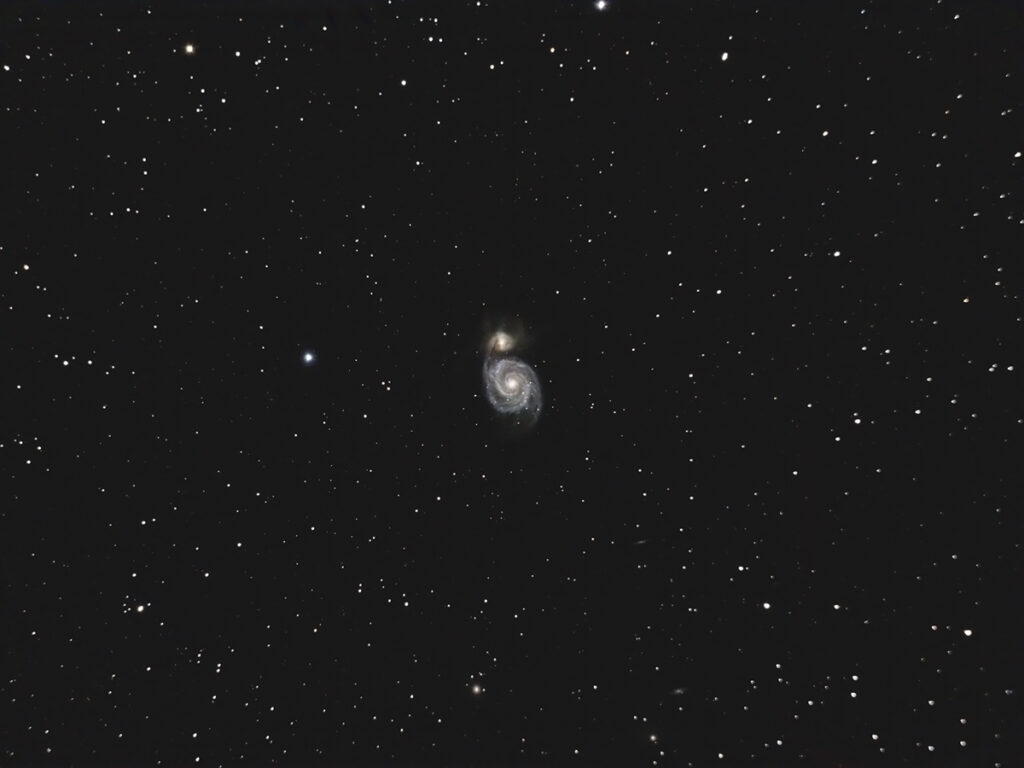
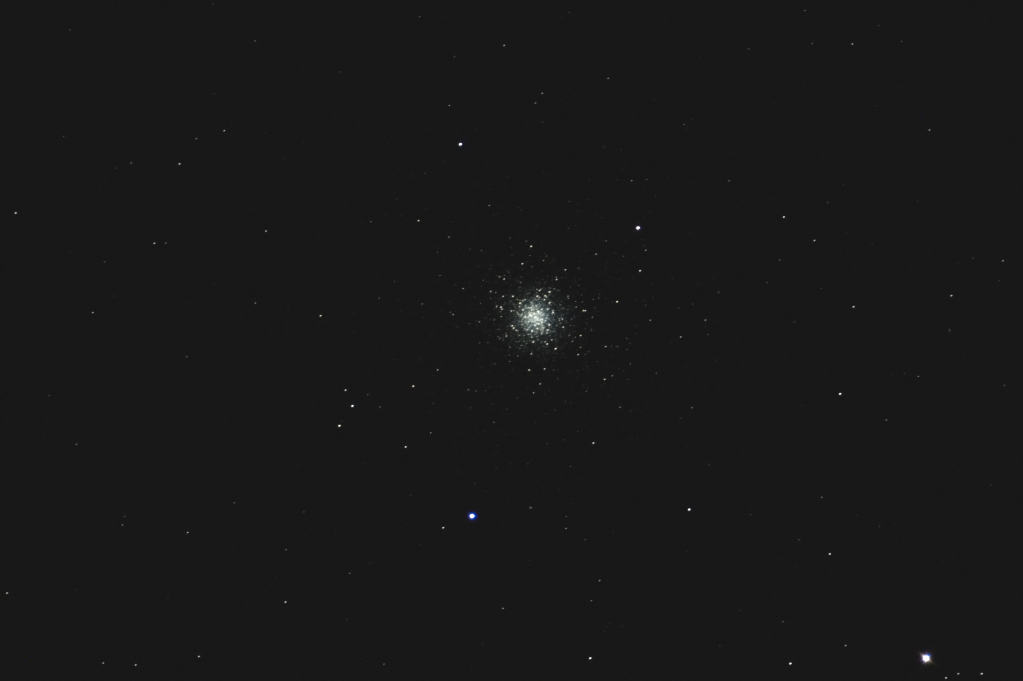
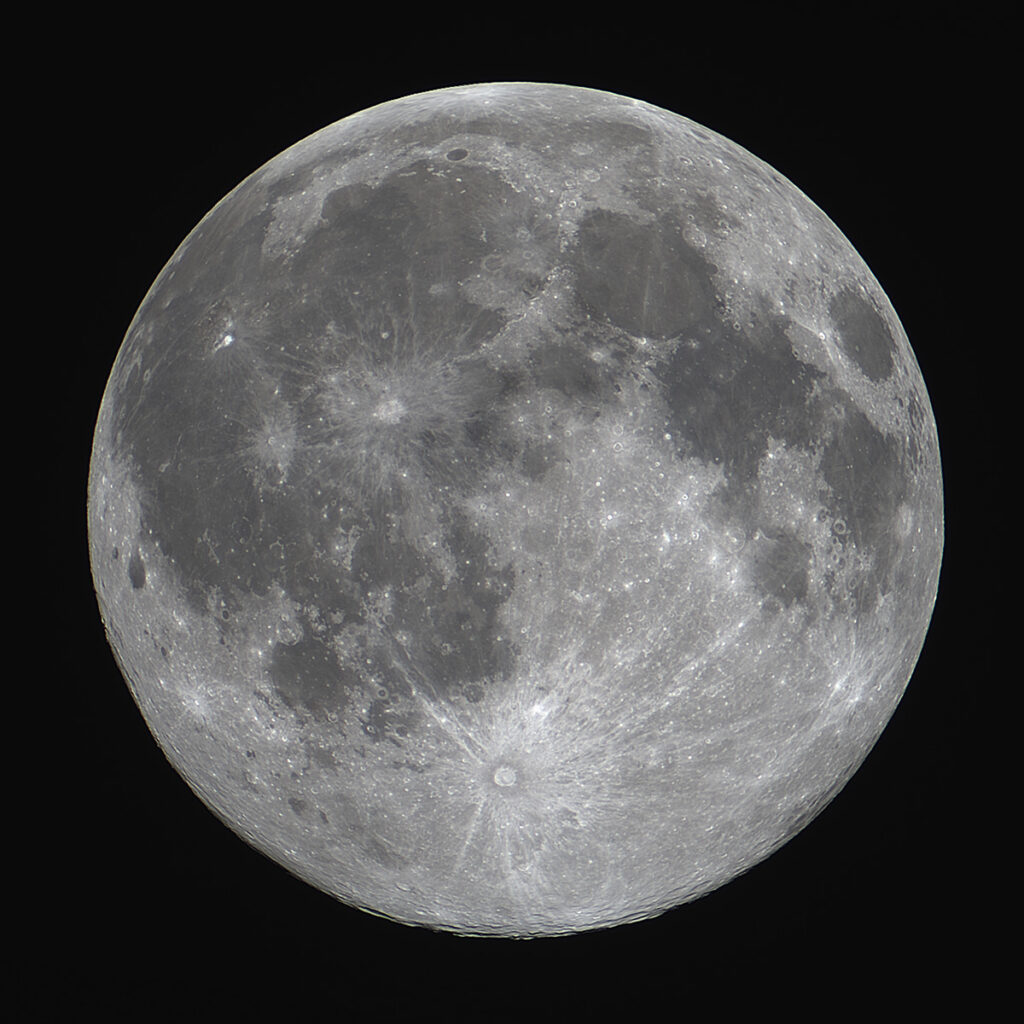
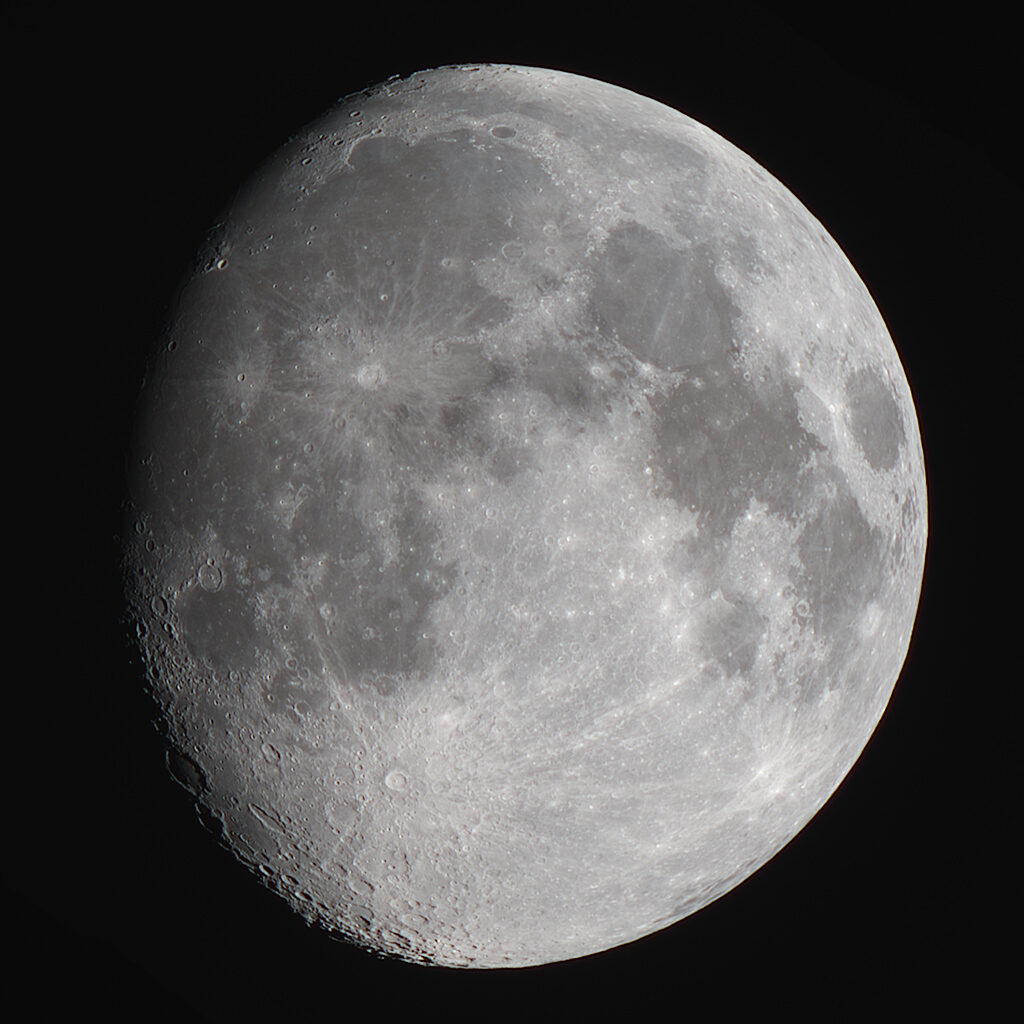
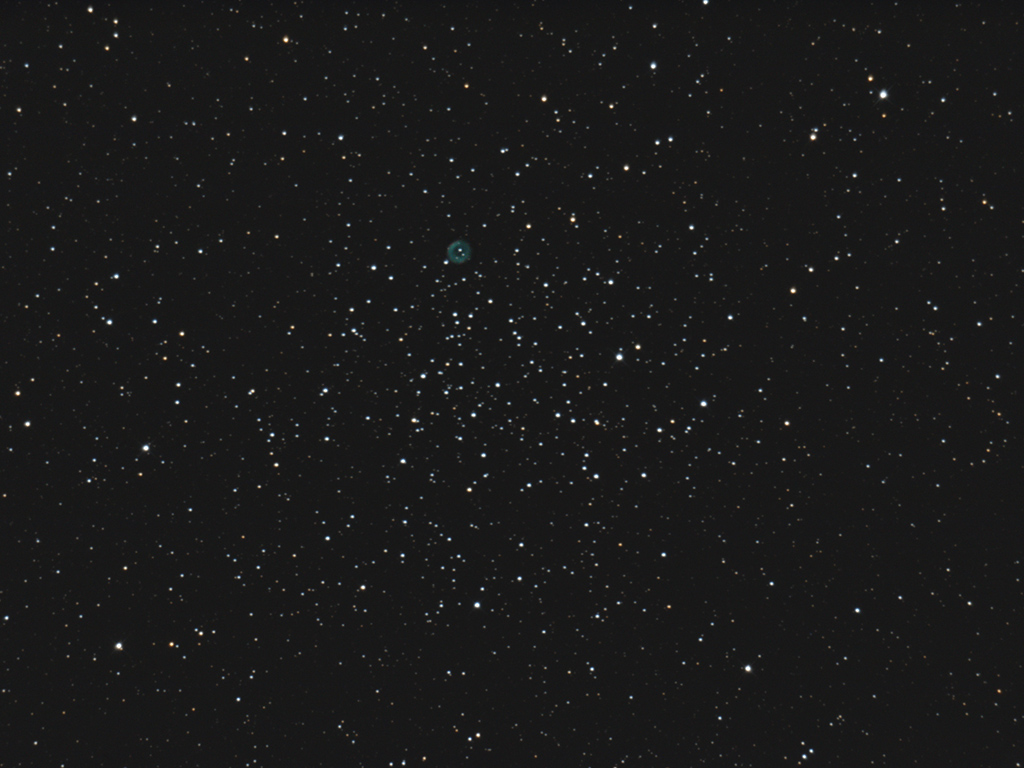
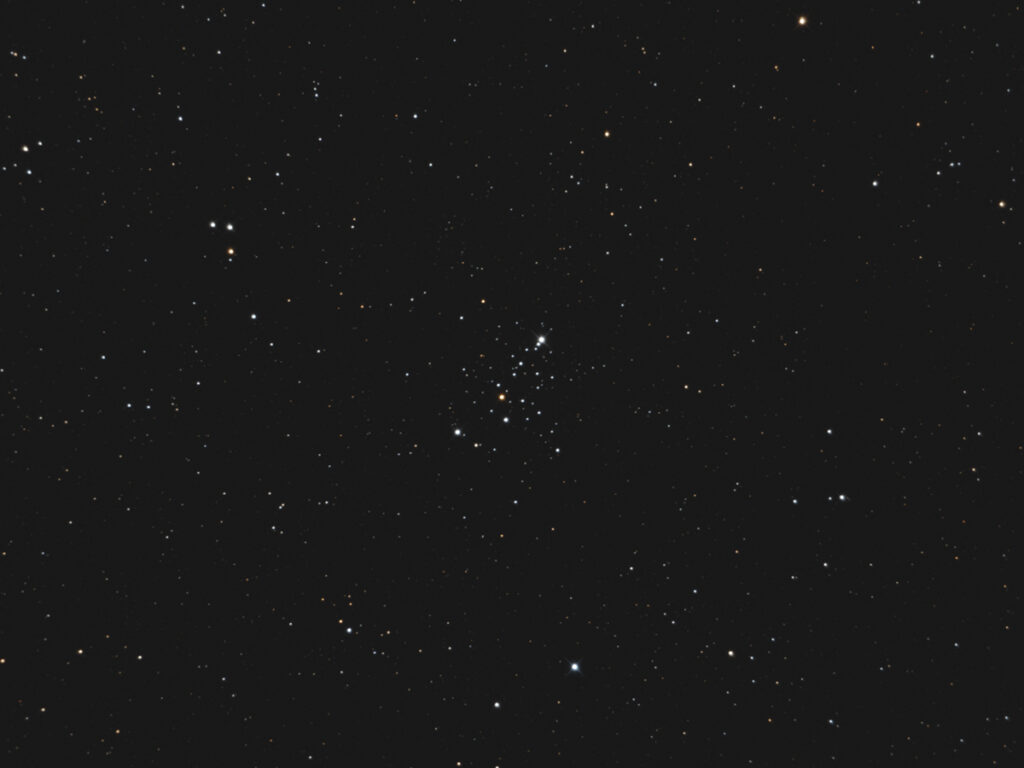
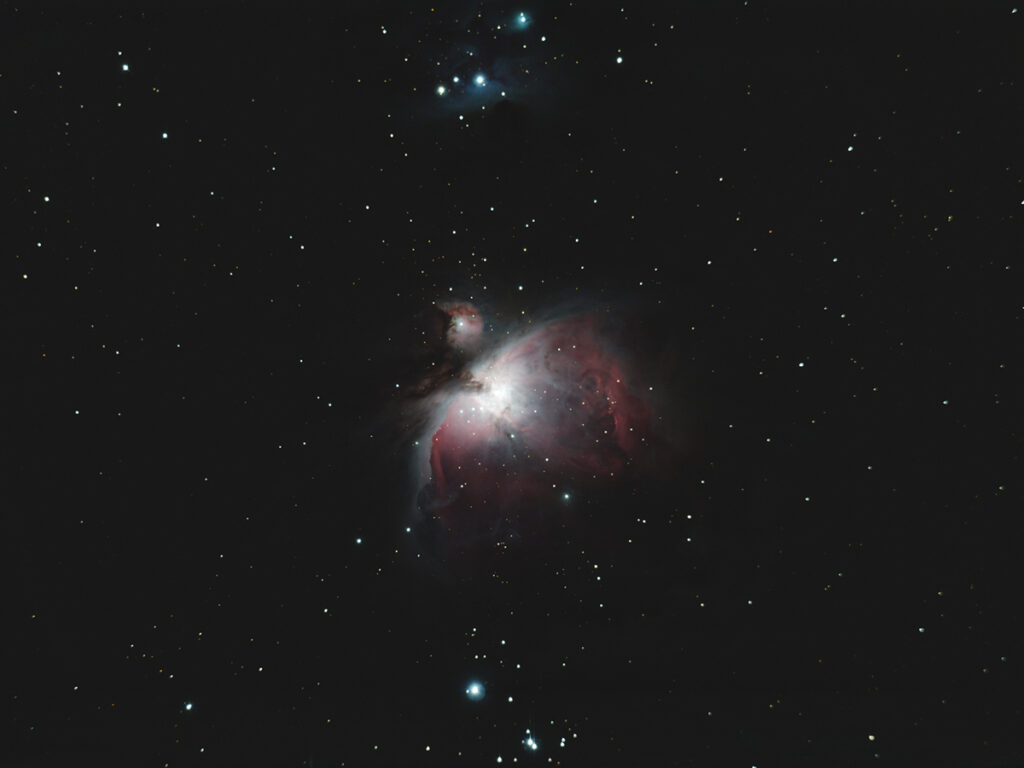
Recent Comments